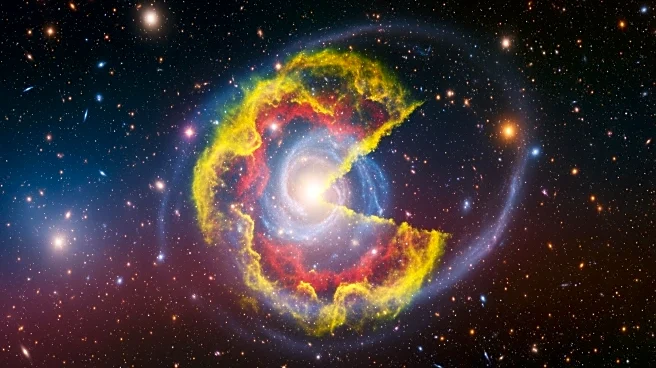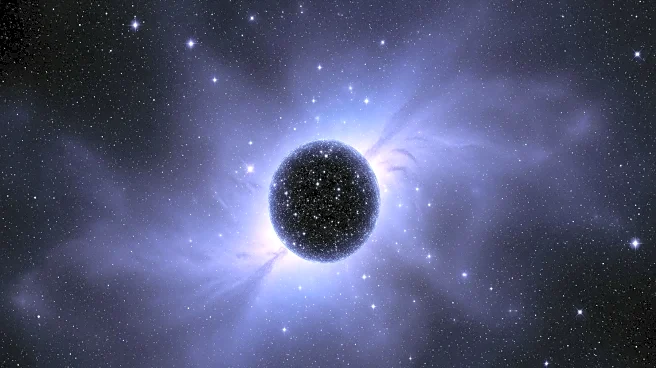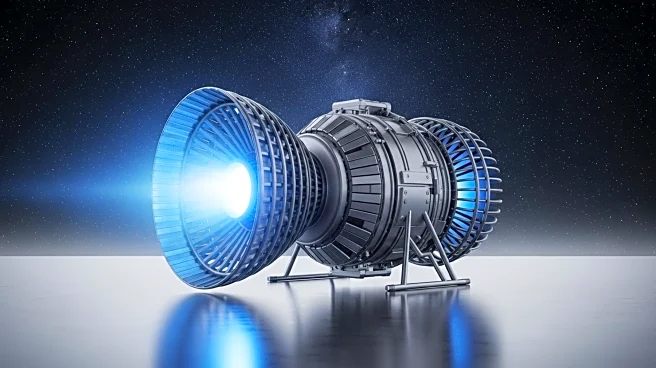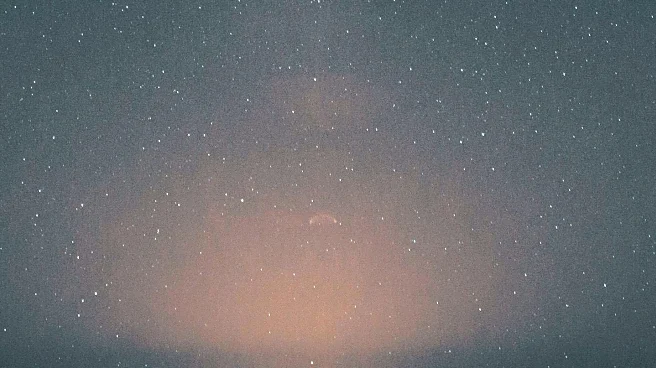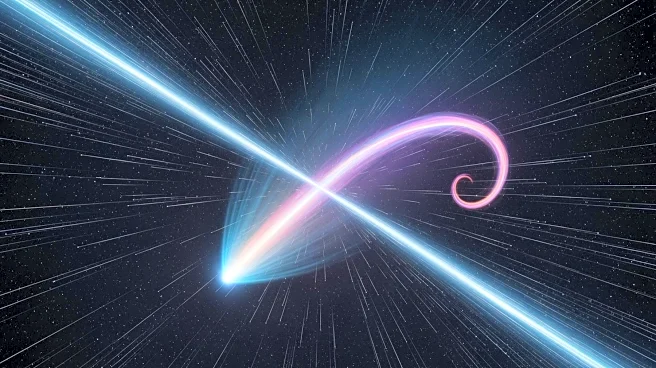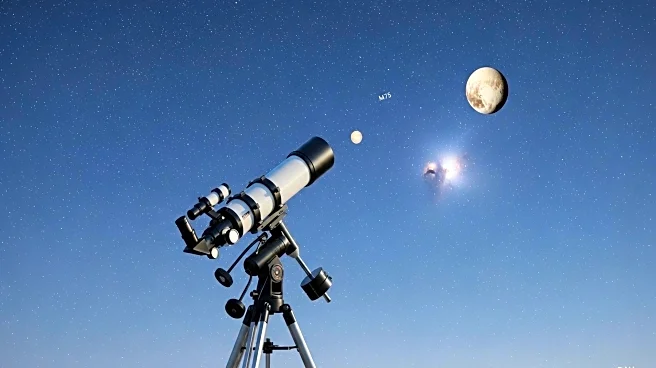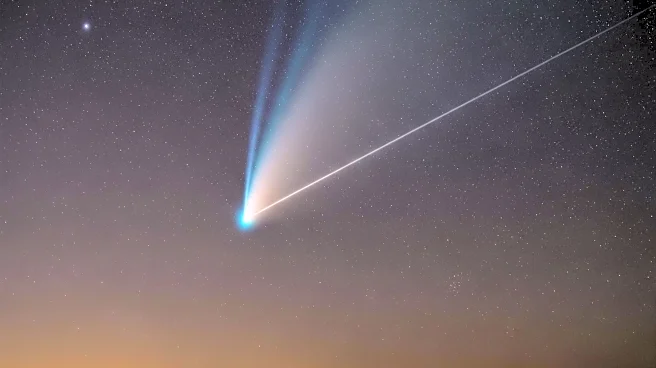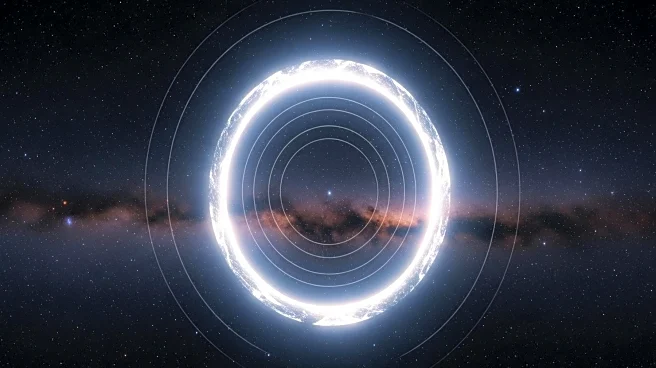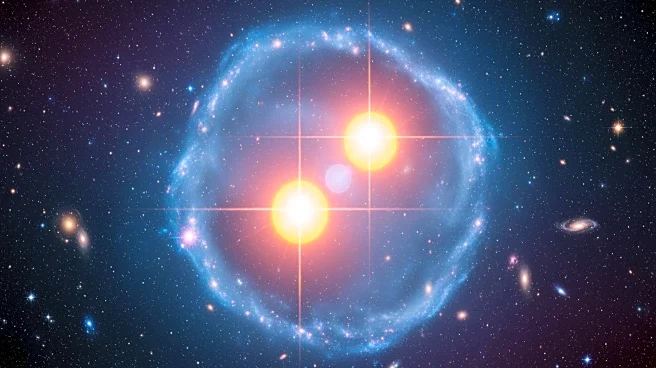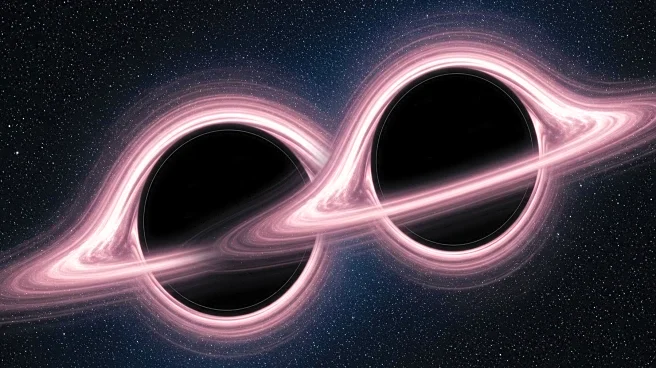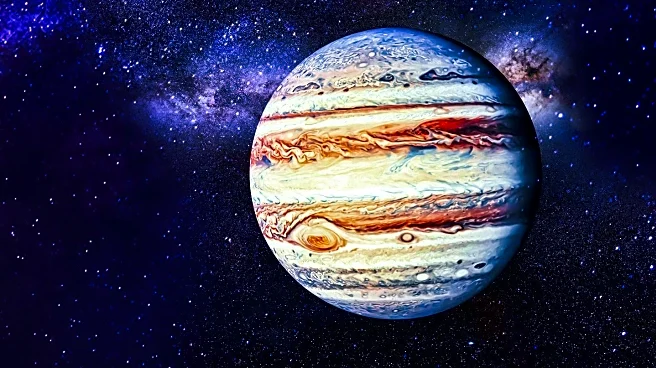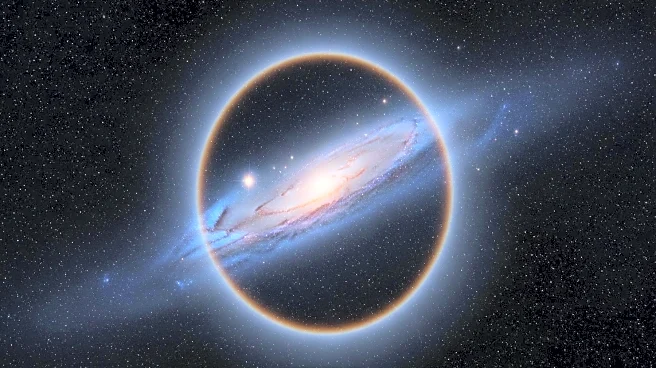What's Happening?
Astronomy Magazine has featured the Pacman Nebula (NGC 281) located in the constellation Cassiopeia. The nebula is noted for its brightness, which is spread across an area slightly larger than the Full Moon, glowing at around magnitude 7. The image showcased
in the magazine was captured using dual-band filters Hα/OIII and SII/OIII, with a 5.5-inch telescope at f/4.3. The photograph represents approximately 28 hours of exposure and has been processed using the Hubble palette, enhancing its visual appeal and scientific value.
Why It's Important?
The Pacman Nebula's detailed imaging and analysis contribute significantly to the field of astronomy by providing insights into the structure and composition of nebulae. Such studies help astronomers understand stellar formation and the lifecycle of stars. The use of advanced imaging techniques, like dual-band filters and extended exposure times, allows for a deeper exploration of celestial phenomena, which can lead to new discoveries and enhance educational resources for both amateur and professional astronomers.
What's Next?
Further studies and observations of the Pacman Nebula may lead to new findings regarding its composition and the processes occurring within it. Astronomy enthusiasts and researchers might continue to explore similar nebulae using advanced imaging technologies, potentially uncovering more about the universe's mysteries. The ongoing development of telescope technology and imaging techniques will likely facilitate more detailed and comprehensive studies of such celestial objects.
Beyond the Headlines
The Pacman Nebula's study exemplifies the intersection of art and science, where aesthetic appreciation meets scientific inquiry. The processing of images using the Hubble palette not only aids in scientific analysis but also enhances public engagement with astronomy by presenting visually stunning representations of space phenomena. This approach can inspire future generations to pursue careers in science and technology.
